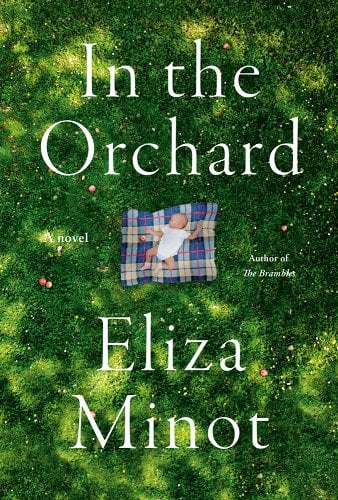[ad_1]
It’s an odd thing, about trends. A trend seems to take on a life of its own, morphing and consuming its way through the zeitgeist. How do they begin, why do they die? There’s something of Orwell’s groupthink, removed (usually) of its menace and totalitarian bent, but nonetheless reflective of the base human need to fit in, to be one of the group and not an outsider, to have a place around the fire. Alone, we are vulnerable to attack, and while the wolf has (d)evolved into Twitter, the danger is present all the same. The literary world is far from safe from such forces—on the contrary, trends infect the publishing industry as much as any other. Probably the most notable, and surely the most vexing, trend over the last decade-plus is the rise of present-tense narration, especially in the first person, an attempt, it appears, to inject more “interest” into novels born of an increasingly attention-deficient world, often disastrously. But, as with all things, there are exceptions, and finally we have one: Eliza Minot’s In the Orchard comes as a refreshingly sensible use of the first-person present tense, a novel that understands its goals and how to achieve them, as deceptively modest as they may be.
The fundamental element of the book, and the one most responsible for the effectiveness of the defining narrative technique, is the tightly circumscribed temporal range. In the Orchard takes place over a single day in the life of “young mother Maisie Moore” as we’re introduced to her, as her family wakes up and, eventually, proceeds to go apple picking. That family is a large and boisterous one: her husband, Neil, and their many children. Harriet, Xavier, and Romeo are each someplace between toddler and preteen, while Esme, the real center of Maisie’s world and, thus, story, is only a couple weeks old. As the potential reader no doubt suspects, there’s a bit more to it than this, but the heart of the narrative—built in accessed memory and long asides on Maisie’s past—branches off this simple plot line, taking a journey to some remembered event or another and then returning to our fictive present day.
The Odyssey glides past a general store where they’ve gotten sandwiches before. They pass a newly painted, white clapboard church.
“Well, at least no one was hurt,” says Maisie to everyone, falling back into herself, “as far as we know.”
Xavier calls up to the front. “I never get that. As far as we know . . . As far to where? As far as what?”
“Does ‘As far as I can see’ make sense, Xavier?” Neil looks back at him in the rearview mirror.
“Yeah.”
“It’s the same thing,” Neil tells him.
Maisie closes her eyes for a second. As far as I can see and she is on her bike, riding down the hill near Nana’s house in the fog, riding down the hill, into the fog. To her right is the ocean, the tiny town harbor in the shape of a dog’s tongue, but she can’t see it because of the fog. The mist is catching on her eyebrows and eyelashes. Nana’s small house whizzes past, hidden in fog but looking like Nana, roses and sweet peas knitted along her fence.
When Xavier first rode a bike, he was disbelieving of himself, even as he pedaled along, stable but squiggly. “Am I doing it? I’m not riding . . . Am I riding?”
Maisie’s stomach jumps the way it would on her bike, over the swell of the bump at the bottom of the hill, Nana’s house, and she imagines that she’s riding through a cloud and a descent and a landing that she can’t see. She thinks of her nana, and her mother, and her father: Where do the dead go?
What excellent movement skills are on display here, jumping across time in a single clause. This is where the present tense makes, well, sense. Besides the grammatical conveniences of being able to easily distinguish fictive past from fictive present—memory from plot—there is an immediacy gained from present-tense narration that, here, fits. If one considers a moment the concepts of narrative and textual functions (similar to the narratologist ideas of fabula and sjuzhet), one can see the sensibility of the present tense. In the Orchard is concerned with exploring how the moment-to-moment world of a “young mother” is continually infused with her status as a mother, her maternity as the dominant feature of her past and her present. Put another way, on the level of narrative, or the story of the book, we’re interested in how this day in a life unfolds; on the level of text, or the book acting as a crafted work, the focus is on how this day can be rendered to distill our heroine’s life writ large. Thus, in uniting these two functions the novel wants to bring the past into the present, to show how this one day is emblematic of all of Maisie’s days.
The present tense allows Minot to achieve this. Nearly every memory, every movement to past tense, as Maisie thinks on some scene appearing in her mind, is signposted by what one of her children was doing—be it soccer game, doctor’s visit, grocery store tantrum. Maisie defines herself and her history by her being a mother, by her relationship with her children, for better or for worse. It is the object of the novel to understand what this means, to mine with depth and fidelity the cost of such exemplary parenting, to demonstrate how having children, especially as a mother, can and does pervade everything, from waking up in the morning to granting a brief minute for nostalgia.
[At the soccer game] Maisie thought of all of them, looking here and there. Her mind wandered, slack with pregnancy, thinking of the lives of these parental figures, standing sentry like cut boxwoods, watching over their charges. Where had they all lived, up to this very moment? Where were they at twenty-five years old, when it was mid-autumn? At fifteen? Ten? Who were their parents? Was this better than before? Was it worse? Were they parenting as their parents had or were they avoiding the way their parents had parented? Who were all these people she knew and yet did not know?
While the mechanics are not quite as consistently smooth as seen in other risk-adept books of recent vintage—within the last year, Lucy Ives’ Life is Everywhere, Mark Haber’s St. Sebastian’s Abyss, and especially Emily Hall’s The Longcut are more forceful, more technically ambitious displays of virtuosity—there is more than something to be said for the attempt. Minot is a skilled and confident writer, unconcerned with the dregs of Goodreads lamenting the “boredom” of her novel. She has a specific story to tell, and does so with a refreshing approach to a worn-out method. We have with In the Orchard, like a sheared hunk of wood drifting in the open current, a book that takes risks; that plays with form, style, and content; that has an actual, non-trendy reason for using the present tense. These ad hoc life preservers are few and far between among the shipwreck of contemporary American fiction, nearly all among mid-career novelists (with the exception of the utterly audacious Hall)—those writers, perhaps, unafraid to do what it takes to achieve their novelistic goals, be it rejecting convention or embracing a trend.

FICTION
In the Orchard
By Eliza Minot
Knopf Publishing Group
Published April 25, 2023

[ad_2]
Source link

